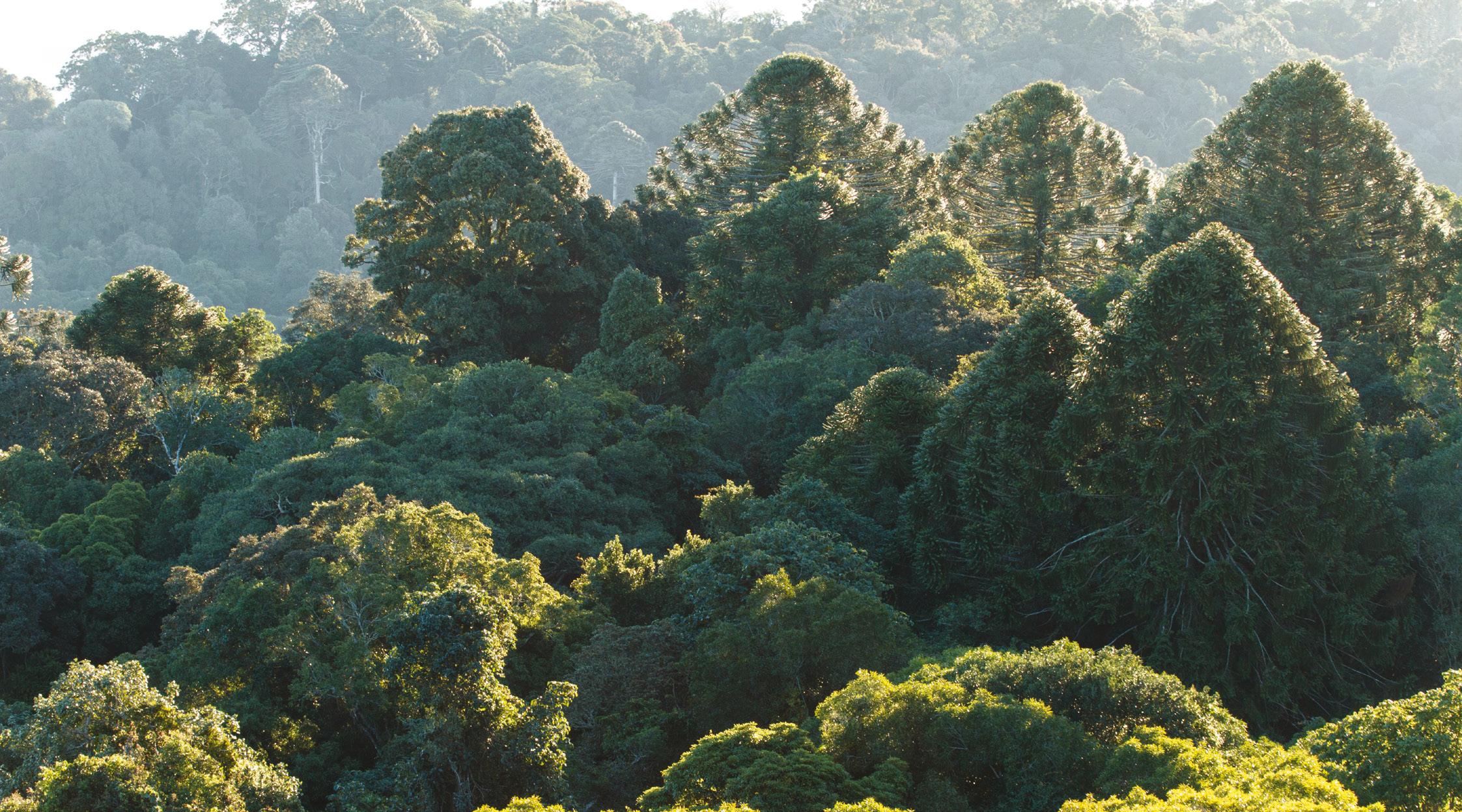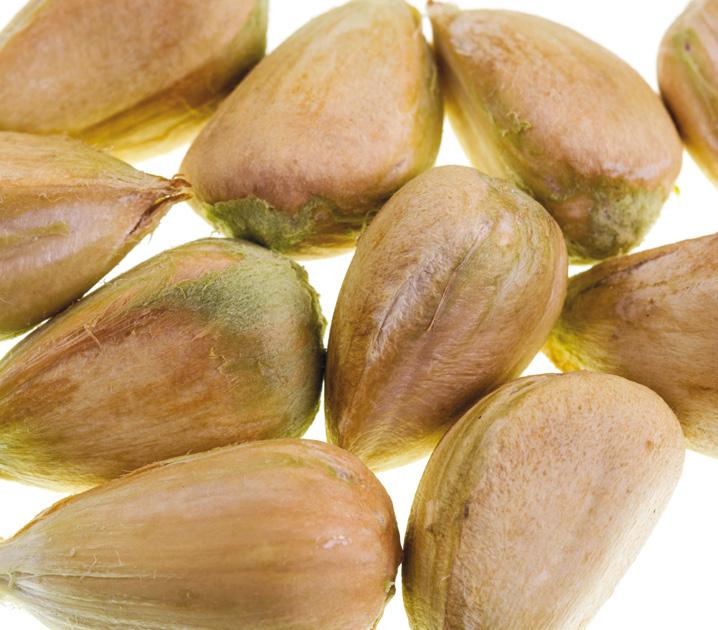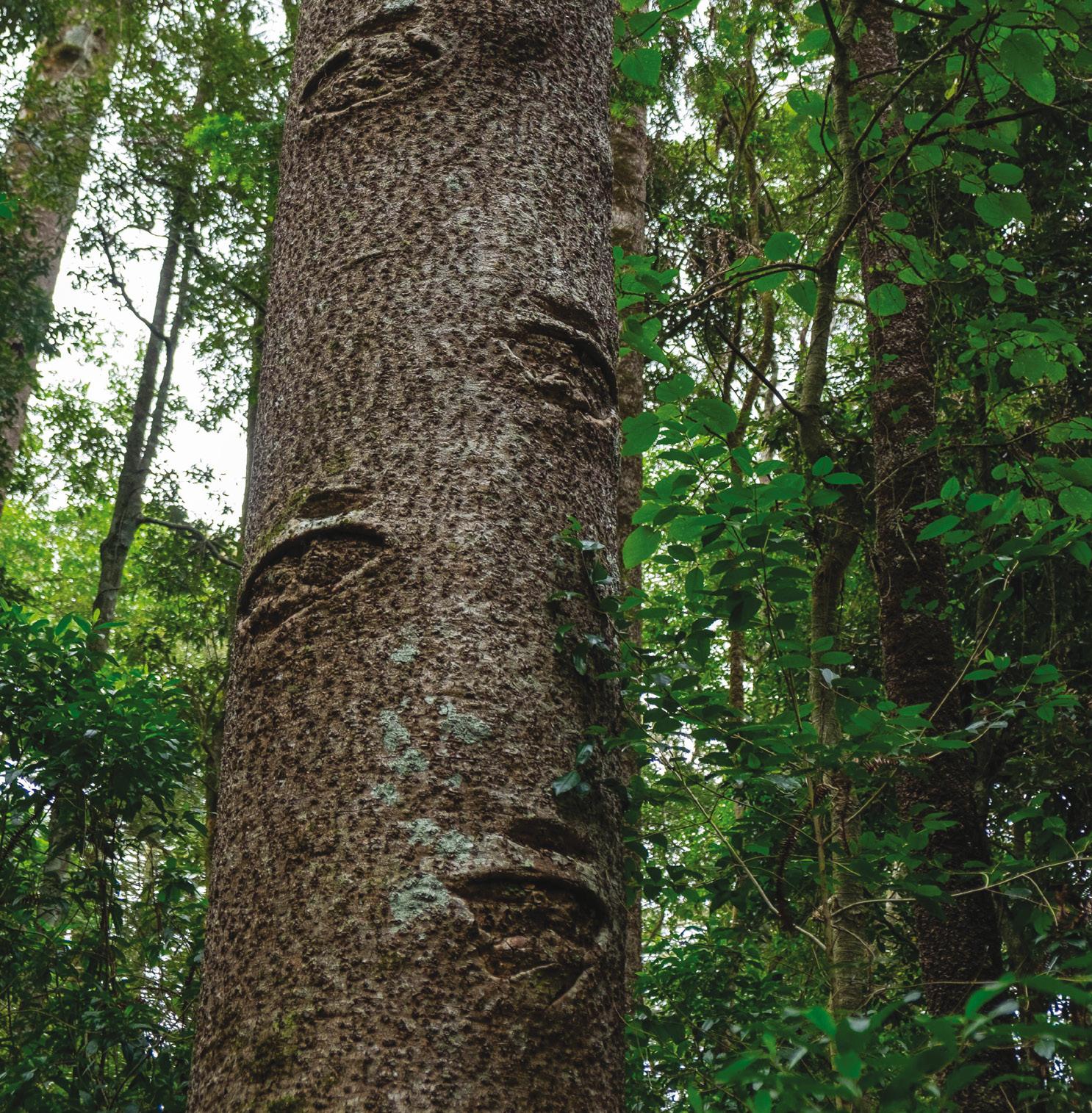
4 minute read
Decolonising science Affording
DECOLONISING SCIENCE
EFFORTS ARE UNDERWAY FOR THE BOTANICAL WORLD TO BETTER ACKNOWLEDGE AND EMBRACE THE VAST KNOWLEDGE OF AUSTRALIA'S INDIGENOUS PEOPLE. PROFESSOR BRETT SUMMERELL, CHIEF SCIENTIST AND DIRECTOR RESEARCH, REPORTS.
Advertisement
Recently I had the great experience to travel around 200 kilometres north-west of Brisbane to the last stronghold of the magnificent Bunya Pine (Araucaria bidwillii), which was once widespread across southeast Queensland but is now greatly reduced due to logging and land clearing.
Unfortunately, I was there because of a disease in this species, bunya dieback, which is associated with the presence of a species of Phytophthora (Phytophthora multivora) that has killed a number of trees in the national park. It appears that this pathogen, which is believed to have originated in South Africa, was introduced into the park in the past two decades and has slowly spread and attacked the root system of the trees – probably facilitated by extreme weather conditions and fluctuations over that period of time.
Bunya Pines are amazing trees. Some of the mature specimens at the national park are a metre wide, 40–50 metres high and estimated at between 500 and 800 years old.
They are a relic of Gondwanan times, with close relatives preserved in the fossil records from the Mesozoic era (252 to 66 million years ago) and recovered from as far afield as South America and Europe.
To see such beautiful trees devastated by this disease is heart breaking and it mirrors similar issues in the North Island of New Zealand with kauri dieback, in Chile with dieback of Monkey Puzzle Pine (Araucaria araucana), and of course with the Wollemi Pine in New South Wales. In all cases it is a situation where an exotic pathogen is introduced by humans and then proceeds to attack a plant species that has limited capability to fight back.
All of these species are members of the Araucariaceae – a type of conifer (although not a true pine) that was once distributed widely around the world but is now restricted to Australia, New Zealand, parts of the Pacific islands and South America (especially Chile). These trees were a major part of Australia's forests in wetter times.
Bunya Pines have enormous cultural significance to Aboriginal people – particularly to the Wakka Wakka people within whose land the Bunya Mountains
National Park resides. I was fortunate enough to meet with the Indigenous rangers there to talk about the impact of the disease, the options for management and to better understand this deep cultural significance.
Over summer, Bunya Pines drop huge cones which contain edible seeds. Heavy crops of the nuts occur roughly every three years, depending on environmental conditions and the age and health of the trees. For hundreds and thousands of years, large groups of Aboriginal people gathered at the Bunya Mountains to take part in bunya festivals, coinciding with the production of the nuts.
Aboriginal people of the Bunya Mountains invited people from around the region and from further afield to join these gatherings. The bunya festivals were times for ceremonies, sharing ideas and revitalising spirituality. Sadly, the expansion of European settlements, along with increased logging activity and clearing for grazing and farming, disrupted the large gatherings, and heavily impacted the Bunya Pines, reducing their distribution. As a result, the protection of these trees and their cultural significance is even more important now.
Recently I have been contemplating the colonial legacy of organisations like botanic gardens and how we might better reflect the enormous significance of plants to Aboriginal people in everything we do as an organisation.
When the Garden was first established in 1816 there was a presumption that there was no knowledge about Australian flora and there was a void in which to document knowledge about plants. This is reflected in how plants are named, both scientifically, and to a lesser extent in their common names.
Of course, nothing could be further from the truth. Aboriginal people had, and have, a level of understanding and a connection to the plants in their environment that is detailed and advanced. It is based on thousands of years of exploration, analysis and observation. They have had the opportunity to observe and record how species change in response to the environment, cultural management practices, grazing by herbivores, and, through experimentation, how different species could be used in a myriad of ways for the benefit of their community. Their knowledge of plants and the ecosystems was, and is, extensive.
We clearly need to learn from Indigenous people and to work with them to harness this knowledge in the remediation of landscapes and apply them to the management of ecosystems to protect communities, infrastructure and biodiversity.
For too long we have dismissed the accumulated knowledge built up over millennia by Aboriginal people. We have failed to recognise that this knowledge is based on true scientific foundations of observation and experimentation, and that it possesses enormous amounts of


Bunya Pine
Detail of Bunya Pine seeds
information that we should be applying to solving the issues at hand.
This information and knowledge should also be reflected in how we name and describe the flora, fungi and fauna that we live with, using genus and species epithets based on Indigenous language (with appropriate consultation and approval) – this is part (along with many other objectives) of the Gardens’ Reconciliation Action Plan.
There is much that can be done to decolonise science and to better reflect the knowledge accumulated by Aboriginal people.










